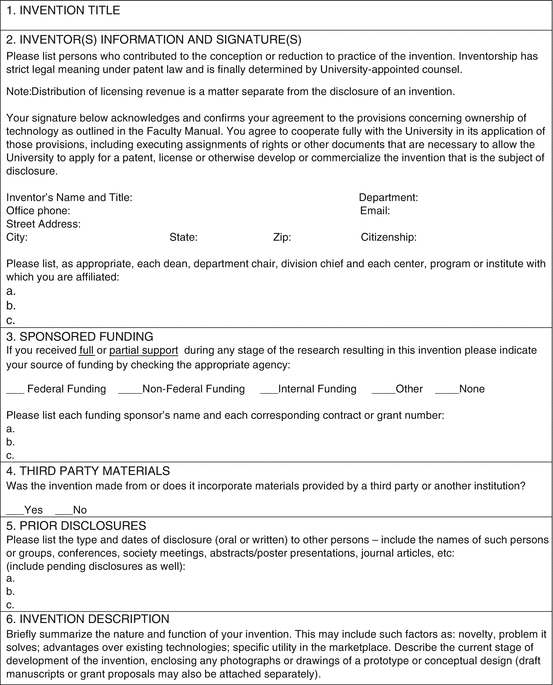Industrial property
Patents
Filed through the USPTO. Provides rights for up to 20 years for inventions
Utility patents – protect processes, machines, articles of manufacture, and compositions of matter (i.e., fiber optics, computer hardware, medications)
Design patents – protect new, original, and ornamental designs for articles of manufacture (i.e., the look of an athletic shoe or a bicycle helmet)
Plant patents – protect invented or discovered, asexually reproduced plant varieties (i.e., hybrid tea roses, Silver Queen corn)
Trademarks
Filed through the USPTO. Can be renewed forever as long as they are being used in business
Protects words, names, symbols, sounds, or colors that distinguish goods and services. The roar of the MGM lion, the pink of the Owens-Corning insulation, and the shape of a Coca-Cola bottle are familiar trademarks
Trade secrets
Not filed through the USPTO. Considered confidential information. No expiration date
Information that companies keep secret to give them an advantage over their competitors (i.e., the formula for Coca-Cola)
Copyright
Copyright
The Library of Congress registers copyrights which last the life of the author plus 50 years
Protects works of authorship, such as writings, music, and works of art (i.e., Gone With The Wind (the book and the film), Beatles recordings, and video games)
The Invention Disclosure
Submitting an invention disclosure to the university or an attorney is the first step towards protecting your intellectual property. One of the most important questions to ask is: Who are the inventors? An inventor is someone who inspired or contributed to the original idea. If there is more than one inventor, those persons should be able to pinpoint the conversations or circumstances in which the original idea was conceived. A laboratory notebook is a permanent record of who did what and who made what contributions. An appropriately maintained laboratory notebook (dated, timed, and cosigned) can often mean the difference between gaining and not gaining recognition for a discovery. Developers, manufacturers, or other persons that helped to build a prototype relating to the original idea are not inventors unless they conceive of a new approach or new materials to achieve your idea. In this case there can be two different inventions: one that relates to a novel functionality or purpose and one that relates to the development of new machine or materials.
Once the invention disclosure is submitted, the next step is a novelty search. In some instances, universities or attorneys may ask that you look for similar inventions to assess novelty. If your search leads you to conclude that your idea is original, then a more detailed search is then performed prior to submission to the United States Patent and Trademark Office (USPTO). Once your patent is filed with the USPTO, an in-depth search of the invention is then performed. This search covers all the missing elements in your preliminary search. The criteria by which the patent office seeks to reject an invention falls under the following categories: (1) novel or not in use, (2) not already patented, (3) not made obvious by “prior art,” and (4) must be useful. Exceptions to this rule include design and plant patents which do not have to be useful; they can be decorative. Utility patents, as their designation implies, must be used for something. The term prior art refers to both patented and non-patented inventions or products disclosed in some form (e.g., patent or journal article) to the public.
Most universities require all personnel to disclose their inventions. After disclosure, the university will notify the inventor whether or not it plans to retain interest and acquire assignment of all ownership rights. As each institution has its own ownership rights policy, it is imperative that you familiarize yourself with the policy before submission of an invention disclosure. Many of the policies follow general language stating:
All inventions or discoveries shall be deemed of proprietary interest to the University if the inventor was employed or otherwise financially supported by the University or if he used University facilities, materials or time to conceive and develop the discovery or invention.
Most invention disclosures require the following basic information: (1) name and department of inventors, (2) information on financial sponsorship, (3) dates and format of prior disclosures, (4) and a detailed description of the invention including photos and drawings. Figure 14.1 shows a sample invention disclosure form.


Fig. 14.1
Sample invention disclosure form for universities
Financial Supporters
For inventions that result from federally funded grants and contracts, the law requires the university to notify the government of the invention. The Bayh-Dole Act creates a uniform patent policy enabling small businesses and nonprofit organizations, including universities, to retain title to inventions made under federally funded research programs. In addition the law has the following provisions:
The government retains a nonexclusive license to practice the patent throughout the world.
Stay updated, free articles. Join our Telegram channel

Full access? Get Clinical Tree


